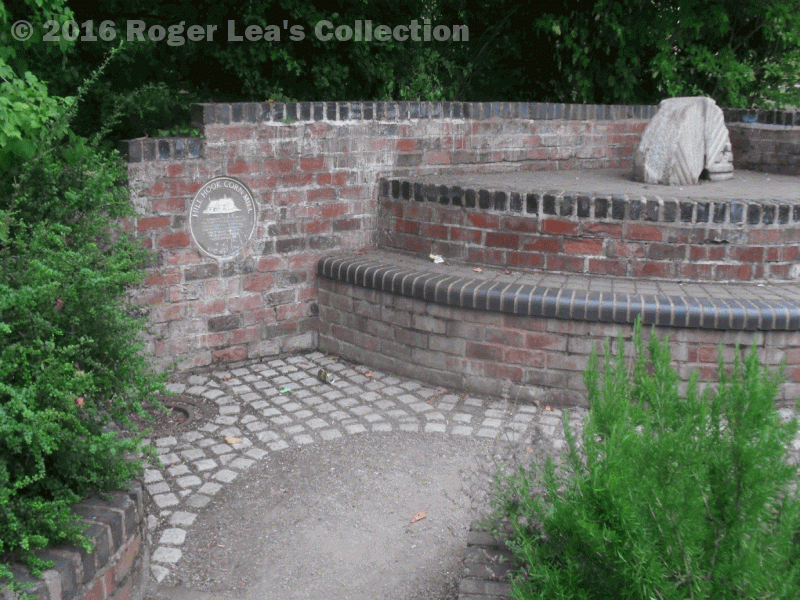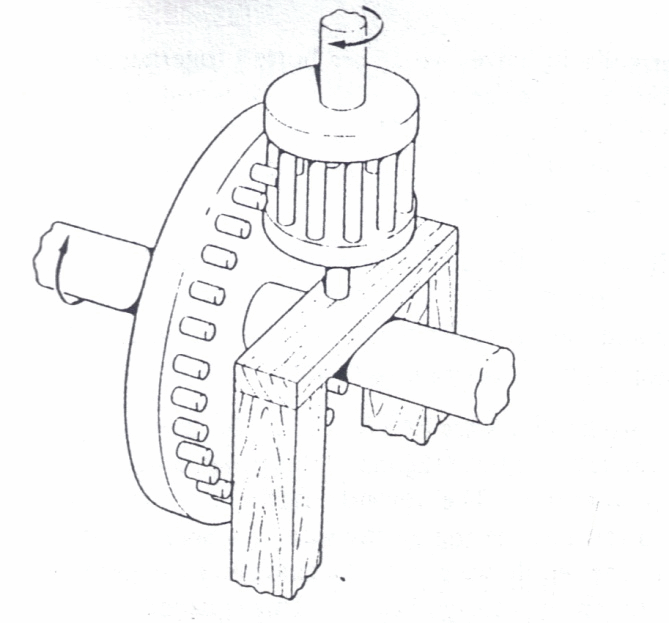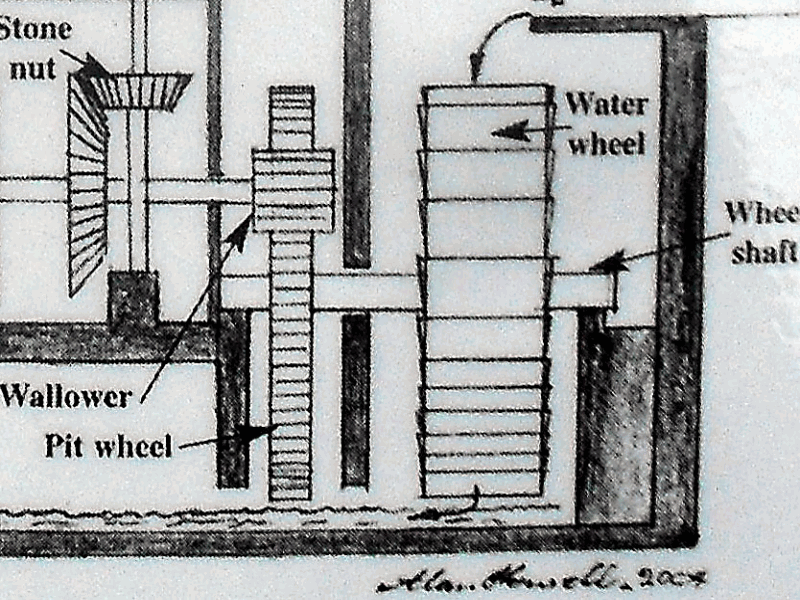Demolition of Hill Hook Mill and the adjoining miller’s house took place in 1970. For some years the site of the buildings and the nearby mill pool were left derelict and neglected, but in 1986 the pool was reinstated with a new dam, and the area was landscaped. The site of the mill was preserved as a garden surrounded by low walls built on the foundations of the mill. The garden featured two pieces of machinery left over from the mill, a millstone (the netherstone) and a cogwheel (the wallower) set in concrete, and an explanatory plaque.
There would have been a netherstone in the first mill on the site, built perhaps in the 1580s, the period when other new watermills at Penns, New Hall, Langley, Park House and Bracebridge were created in Sutton Coldfield. Corn was ground between two large millstones, the lower one (netherstone or bed-stone) being fixed while the upper or runner stone was made to revolve. The runner stone in the sixteenth-century mill probably turned on a spindle fitted with a “lantern” gear which engaged with projections on a large pit-wheel fixed to the same axle as the waterwheel, all made of wood; if there were two sets of stones, two waterwheels would be required.
It was not until the eighteenth century that advances in technology were made such that two sets of stones could be worked from a single waterwheel - this machinery made use of a gear called a “wallower”. In this method (which can be seen to this day at New Hall Mill) the waterwheel is positioned outside the mill fixed to an axle to which a pit-wheel inside the mill is also attached. The pit-wheel at Hill Hook Mill had 112 teeth, engaging with the teeth on the wallower to drive a long rod or lay shaft. Bevel gears on this shaft could mesh with the bevelled stone nuts attached to the spindles of the runner stones to set the mill to work. Similar machinery can be seen at New Hall Mill, where the pit wheel has 136 teeth and the wallower has 26 (I counted 36 teeth on the Hill Hook wallower).
Records show that there were two sets of millstones at Hill Hook Mill in 1832. One set, installed in 1815, was made of the superior and expensive stone known as French Burr, imported from Paris; the runner stone on the older set was also French Burr, but the netherstone was Derbyshire Peak. In the sixteenth century all the stones would have been of millstone grit from the quarries near Hathersage in Derbyshire - the netherstone displayed in the garden at Hill Hook is Derbyshire Peak.
An unknown entrepreneur established the mill with its pond at Hill Hook on common land. The commons were administered by the Warden and Society (the Corporation) of Sutton Coldfield, and the Warden granted permission for the mill and pool to be built in return for an annual rent. The mill was never prosperous, but Thomas Bickley, miller in 1830, was evicted in 1833 for not paying his rent and misusing the property; an inspection of the mill in 1832 found that it was in “a deplorable state of dilapidation”. New tenants put the mill into working order, and in 1861 there was a comprehensive renovation and modernisation of the machinery. From then on the mill machinery was similar to that preserved at New Hall Mill, which you can see in operation on the two remaining open days this year, Monday 31st August and Sunday 13th September.


